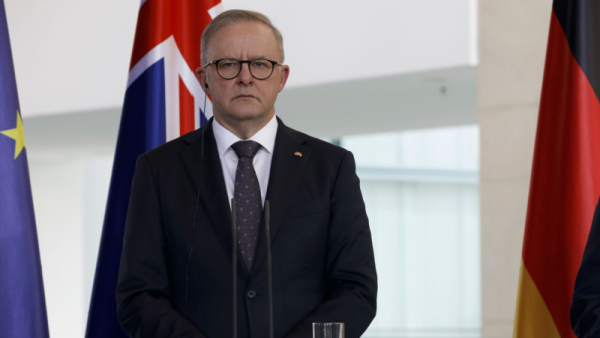Juergen Nowak / Shutterstock

James Laurenceson, Director, Australia-China Relations Institute, University of Technology Sydney |
This article appeared in the East Asia Forum on August 3 2023.
Whether Australian Prime Minister Anthony Albanese will visit China in 2023 remains uncertain, but the odds are favourable. Beijing has issued an invitation and Albanese said that the trip remains ‘likely’. Foreign Minister Penny Wong has confirmed that Canberra ‘would look to make sure that a visit can occur’. But there remain two factors that might derail a visit.
First, there remain unresolved bilateral disputes, including trade restrictions affecting Australian barley, lobster and wine, as well as the ongoing detention of Australian citizens like journalist Cheng Lei. Repurposing a talking point used with vigour by China’s Ministry of Foreign Affairs, Wong has said that these disputes work against creating the ‘positive atmosphere’ that would be conducive to a successful leader visit.
Second, there are bureaucratic challenges to overcome. These include the public disappearance of Chinese Foreign Minister Qin Gang who was scheduled to visit Australia in late July. Qin’s visit would have likely furthered preparations for Albanese’s trip to China. There is also the difficulty of the Australian embassy in Beijing coordinating a prime ministerial visit when the current ambassador Graham Fletcher finishes his posting in August 2023 and his successor has yet to be announced.
‘Will he or won’t he’ aside, a more fundamental question is what level of ambition a prime ministerial visit could realistically target.
In late 1996, former Australian prime minister John Howard was able to overcome an earlier period of bilateral tension by settling on a ‘framework for handling the relationship’ with his Chinese counterpart Jiang Zemin. This set up his own first and highly successful visit to Beijing just a few months later.
The Howard–Jiang framework recognised the two countries’ differences but agreed to focus on their ‘mutual interests’. Howard also assured Jiang that whatever Washington had in mind, Canberra was not ‘trying to contain China’, and more broadly, ‘the alliance between Australia and the United States was…not in any way directed at China’.
Re-committing to ‘important common interests’ also constituted the backbone of a 2009 Australia–China joint statement that sought to move the relationship on from a year described by then-Australian ambassador to China Geoff Raby as ‘our collective annus horribilis’.
A high-ambition Albanese visit would require Beijing to live up to the 2009 joint statement’s commitment to ‘conduct mutually beneficial trade in accordance with market principles’.
As for Canberra, seeking to anchor a US presence in the region to provide ‘strategic balance’ is one thing. But joining a Washington-led attempt to contain China’s rise is another thing entirely.
Eschewing containment would hardly represent an Australian concession. Former Australian prime minister Scott Morrison insisted in 2020 that China’s economic success was ‘a good thing for Australia’ and juxtaposed his government’s position with that of the United States, saying ‘not all countries have that view, and some countries are in strategic competition with China. Australia is not one of those’.
While the Biden administration claims that its policies do not amount to containment, this assessment is disputed by informed US analysts. It was not Tokyo, Seoul or The Hague that lobbied Washington to cut off China’s access to advanced semi-conductors in October 2022. Rather, it took a more than a year of campaigning by the Biden administration to forge an agreement, the details of which remain unclear.
Australia is not a noted producer of high-tech goods. But there have been suggestions that Canberra may cut Chinese investors off from developing projects in Australia’s critical minerals sector. A Critical Minerals Strategy released by the Australian government in June 2023 emphasised bolstering supply chain resilience by increasing investment from ‘likeminded partners’. The partners listed included the United States, the United Kingdom, the European Union, Japan, Korea and India. But not China.
In 2023, several investment proposals in Australia’s critical minerals sector connected to Chinese interests were blocked on the grounds that they were ‘contrary to the national interest’.
Given that Chinese industrial supply chains are ‘utterly dependent’ on imported raw materials, including Australian iron ore and lithium, a blanket ban on Chinese companies taking stakes in mine sites would unsurprisingly be viewed dimly in Beijing. An alternative for Canberra is to block only those proposed investments with clear national security sensitivities or to add conditions to approvals, such as mandating that any output produced is made available on global markets.
Locking China out of regional economic integration initiatives like the Comprehensive and Progressive Trans-Pacific Partnership (CPTPP) would also be inconsistent with an approach eschewing containment. It would, of course, be appropriate to insist that Beijing must commit to the CPTPP’s high standards if it wishes to be considered for membership and to disabuse any notion in Beijing that it could veto another applicant, such as Taiwan, from joining.
Minister Wong is right to flag that Beijing has a responsibility for creating many of the ‘positive circumstances’ that would set up a successful visit by Prime Minister Albanese later in 2023. But Canberra must also decide whether to aim high or low.
Author
Professor James Laurenceson is Director of the Australia-China Relations Institute at the University of Technology Sydney.


